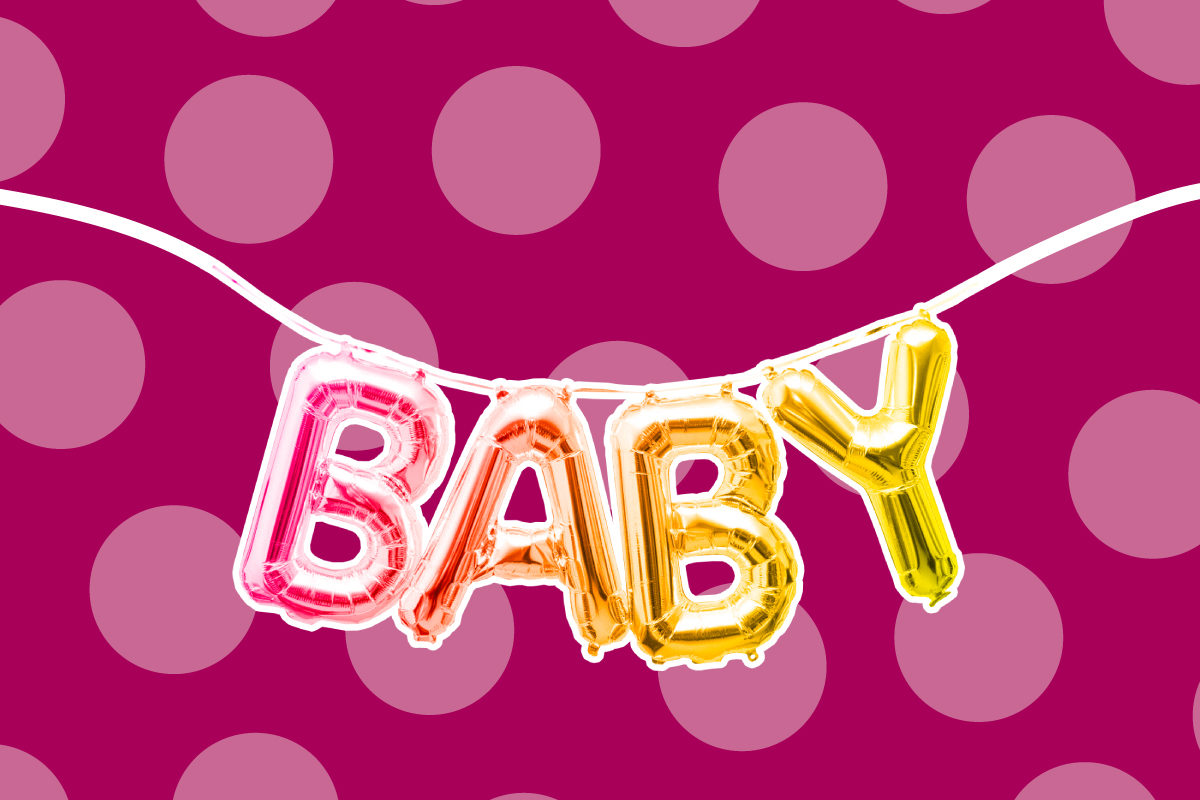You’re having — or just had — a baby! B’shaah tovah or mazel tov!
Now, how about welcoming your little bundle of joy into Jewish life with a short ceremony? When we think of such ceremonies for babies, we often think of the bris, or brit milah, the Jewish circumcision ceremony that is traditionally held on a baby boy’s 8th day of life.
But that ritual leaves out around 50% of the baby population: female babies! How do we welcome them? Plus, there are also parents who don’t want to circumcise their sons — for a myriad of reasons; we don’t judge — or who had their baby circumcised at the hospital. Is there a way we can Jewishly welcome these babies into the world with a bang?
Yes! These days, many Jewish parents are choosing to hold a baby naming ceremony. Here at Kveller, we have all the information you need to know about planning such a ceremony, what to call it, what it’s about, what the rituals involved look, who to invite, and, of course, of all, what food to serve.
Read our answers to following FAQs so you’ll have everything you need to know:
What is a baby naming ceremony?
A baby naming ceremony is a Jewish ceremony, held after the birth of a baby, that does not involve a circumcision, a Jewish ritual known as a bris or brit milah. Brit milah means “covenant of circumcision,” so a baby naming ceremony is designed to be a way for a baby to enter into a covenant with God but without the circumcision part.
The ceremony can include many different rituals, songs, and prayers, but it’s primary purpose is to celebrate the birth of a child, to announce their name and its meaning to the world, and to welcome them into Jewish life.
What exactly is this baby naming ceremony called?
There’s no easy answer to this one! The good news is that you’re spoiled with choice: there are lots of different names for a baby naming ceremony. Most of the names for these ceremonies are gendered and some are denominational.
Girls:
Brit bat — Brit bat means a “covenant of the daughter” in Hebrew.
Simchat bat — Simchat bat means “joy of the daughter” in Hebrew, it’s usually used in Ashkenazi communities for a girl’s naming ceremony.
Zeved Habat — Zeved Habat means “gift of the daughter.” It’s a Sephardic baby naming ritual that is usually held in a synagogue within the first month of life.
Boys:
Brit ben — Brit ben means a “covenant of the son” in Hebrew.
Non-gendered:
Brit shalom — Brit shalom means a “covenant of peace” in Hebrew.
Brit chayim — Brit chayim means a “covenant of life” in Hebrew.
Brit tikkun — Brit tikkum means a “covenant of reparation” in Hebrew.
But you can also just call it a baby naming ceremony. It’s simple and clear!
Where do I hold a baby naming ceremony?
You can hold a baby naming ceremony anywhere you’d like. Some chose to do it in a synagogue, some in the privacy of their own homes, and others in private or public venues! Because a baby naming ceremony does not involve a medical procedure, you can have one wherever you want, even at your local park! Just make sure there’s room for a buffet table, and places to sit for your elderly guests.
When do I hold a baby naming ceremony?
A bris is supposed to take place on the baby’s 8th day of life (unless there are medical reasons to postpone it), but a baby naming ceremony can really take place whenever you want. Certainly, you can hold the ceremony on the 8th day of life, if that’s convenient, but if you want to wait, here are some biblical time frames to think about:
- After 14 days, which according to the Torah, is the length a mother’s ritual impurity after a daughter’s birth lasts
- When the baby turns 1 month old, echoing the ancient belief that a child was only viable after 30 days.
- After 80 days, the length of time that the Torah tells us a woman had to wait after birthing a girl to bring sacrifices to the Temple.
Of course, since there are no rules around this practice, you can also go with any timeframe or specific date around your child’s birth that feels significant to you.
Do I have to keep my baby’s name a secret until the baby naming ceremony?
No, you do not! But you’re giving your child a Hebrew name, you might want to keep that private until the baby naming event, but it’s truly up to you.
How do I choose a Hebrew name?
Well, you’re in luck! We happen to have a guide dedicated to just that: the ultimate guide to choosing a Jewish baby name. Check it out our ultimate Jewish baby names guide.
How did this tradition start?
According to MyJewishLearning, the first known ceremony of welcoming, naming, and covenant for a girl was published in 1973. While there have historically been other ways to denote and celebrate the birth of a daughter in Judaism (you can read all about them here), these ceremonies “were emerging at about the same time in the Reform movement and in the context of the burgeoning wave of Jewish feminism.”
Can I hold a baby naming ceremony instead of a bris?
You can. There are multiple reasons to do this:
1) You do not want to hold a bris for a medical or an ideological reason.
2) You have already had the circumcision of the baby performed at the hospital by a doctor.
How does a baby naming ceremony work?
It is really up to you. Many will chose to hold their bris bat or simchat bat at a synagogue, where a rabbi may have a pre-prepared program. If you hold the baby naming ceremony in your home or in a venue, you run the event in any way you want. It will usually involve prayers and blessings (like Shehechiyanu, a prayer that celebrates firsts), a speech from the parents about the meaning of the name, some kind of ritual to symbolize the baby’s covenant with God, like wrapping the baby in a tallit. You can also songs and have family members to readings. You can end with with hamotzi, the blessing over bread, and a festive meal. Here is a popular framework for the event.
What different rituals can be part of a baby naming ceremony?
There are a few different rituals one can perform at a baby naming ceremony, here are some:
- Immersing the baby in water (with your pediatrician’s permission) to symbolize the mikveh.
- Washing the baby’s feet to symbolize the welcoming of guests, as Abraham did in the bible.
- Wrapping the baby in a tallis, or touching a baby’s lips to a klaf (a sacred scroll, often the one found in a mezuzah) to welcome the baby into Jewish life.
Here are more alternative rituals for naming ceremonies.
Do I have to have a rabbi at the baby naming ceremony?
No, you do not! Many people chose to hold the ceremony themselves, or to have a friend of the family help lead it. It is truly up to you.
Do I have to have a Hebrew name for my child?
If you want your child to participate in Jewish community life, and in Jewish life cycle events, a Jewish name is important. However, some people choose to have their child’s legal name be their Hebrew name.
Who do I invite to the baby naming ceremony?
Whomever you want! Jewish or not, you can invite anyone whom you feel will be important in your child’s life. Or you can have a more intimate ceremony, and invite only family and close friends. At a bris, many will want at least a minyan (10 people, the minimum needed to pray together), but you certainly don’t need to have that many people. Think about the capacity of the venue where you’re holding the event, and decide whether you want to invite coworkers and other acquaintances.
What do I serve at a baby naming ceremony?
Food is an important part of any Jewish lifecycle event! Certainly, a nice spread of bagels, spreads, and lox will always do the trick, but you’re free to serve whatever foods are meaningful for your family and your community. If you want to spice things up, you can also serve foods that you were craving during your pregnancy! Here are some ideas for things to serve at a baby naming ceremony.








